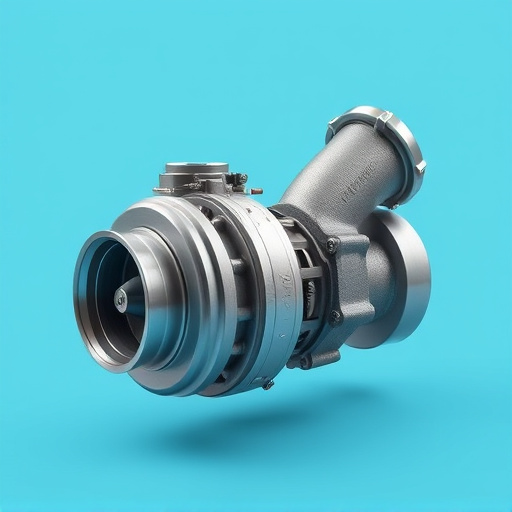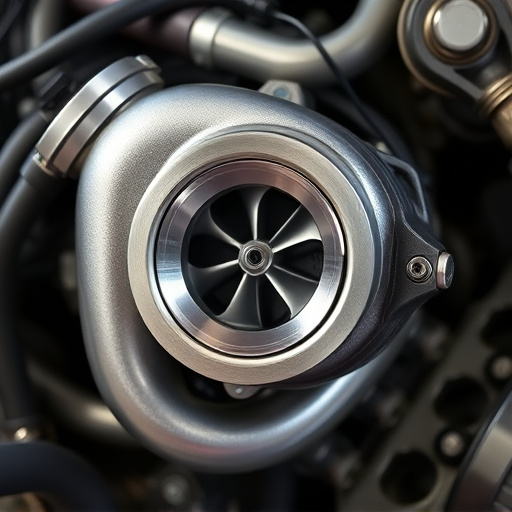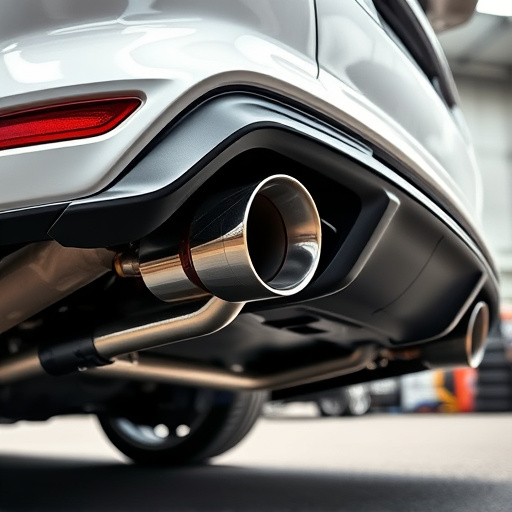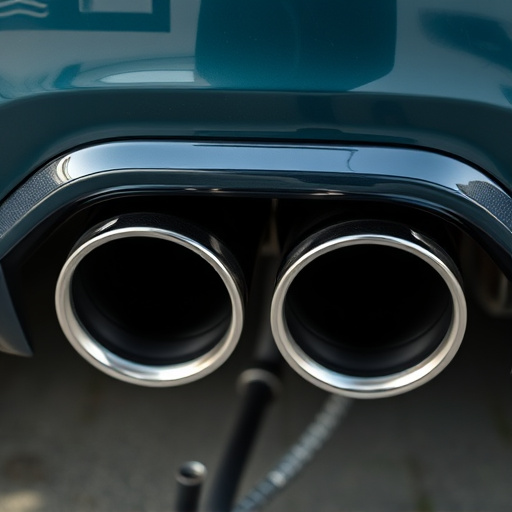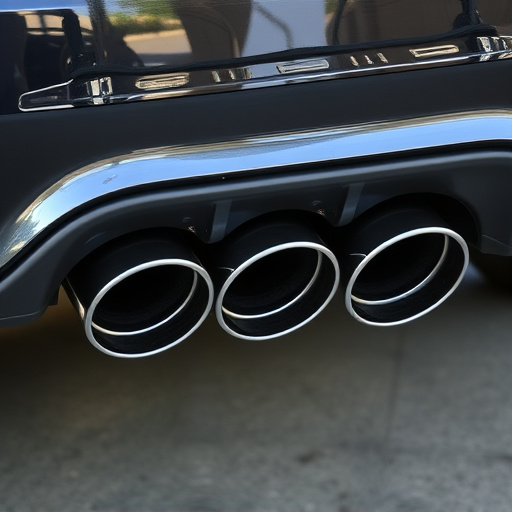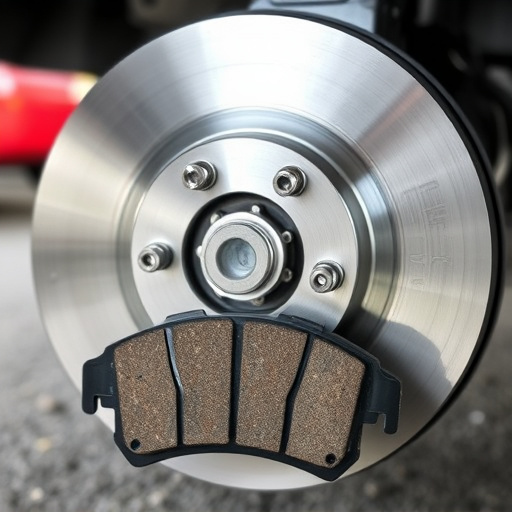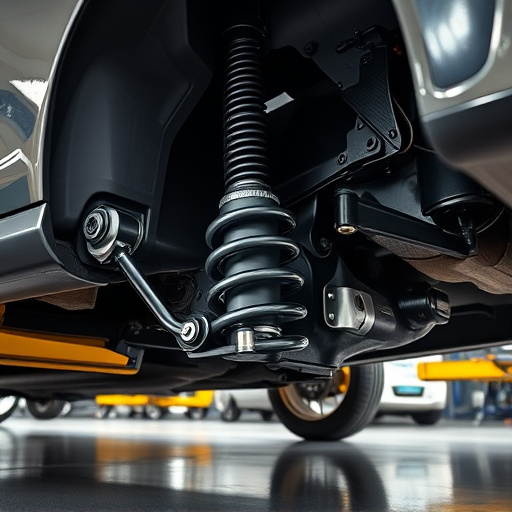Exhaust systems for cars are vital for performance, efficiency, and emissions control, with options ranging from stock systems meeting legal standards to high-performance setups boosting power and torque. Selection should consider vehicle make/model, intended use, and desired sound profile. Regular maintenance is key, especially with performance upgrades. The best exhaust system aligns with individual needs, offering a balance between performance, noise, and affordability.
Choosing the right exhaust system for your car isn’t just about sound—it impacts performance, fuel efficiency, and longevity. This guide breaks down the different types of car exhaust systems, from stock to high-performance options. We’ll explore key factors like budget, driving style, and desired sound profile to help you navigate this crucial component upgrade. Discover the pros and cons of popular choices, empowering you to make an informed decision for your vehicle.
- Understanding Different Types of Car Exhaust Systems
- Factors to Consider When Choosing an Exhaust System
- Benefits and Drawbacks of Popular Exhaust System Types
Understanding Different Types of Car Exhaust Systems

Car exhaust systems are a vital component of any vehicle’s performance and efficiency. Understanding the different types available is key to making an informed decision when it comes to enhancing your car’s capabilities. The primary function of an exhaust system is to facilitate the escape of burnt gases from the engine, reducing noise levels and improving overall emissions control.
Exhaust systems can be categorized into several types, each with unique features and benefits. For instance, a stock or standard exhaust system is typically designed to meet legal emission standards, offering a balanced performance-to-noise level. On the other hand, high-performance exhaust systems are engineered to enhance power and torque, often featuring larger diameter pipes, specialized mufflers, and advanced materials like stainless steel. These modifications can lead to improved throttle response and a more aggressive sound, appealing to enthusiasts who prioritize speed and an immersive driving experience. Additionally, some vehicles come equipped with catback exhaust systems, which replace the rear portion of the stock setup, offering a balance between performance gains and maintainable noise levels.
Factors to Consider When Choosing an Exhaust System

When choosing an exhaust system for your car, several key factors come into play. Firstly, consider the type of vehicle you have and its intended use. Different cars have varying exhaust requirements based on their make, model, and year. For instance, high-performance vehicles may need systems that enhance vehicle performance while maintaining optimal efficiency. Conversely, everyday drivers might prioritize noise reduction and cost-effectiveness.
Additionally, think about the desired sound profile and level of customization. Some exhaust systems feature aggressive, deep tones ideal for sports cars, while others offer a more subtle, refined note suitable for luxury vehicles. The choice also involves understanding the components like exhaust mufflers and their role in noise suppression versus performance. Don’t overlook the importance of regular maintenance and accessibility for servicing, especially when considering performance-boosting upgrades like air filter kits.
Benefits and Drawbacks of Popular Exhaust System Types

Exhaust systems for cars come in various types, each with its unique benefits and drawbacks. One popular choice is the performance exhaust, which is designed to enhance engine performance by reducing backpressure. These systems often feature larger diameter pipes and specialized components that allow for better gas flow, leading to increased horsepower and torque. However, they can be noisy and may require modifications to comply with local emissions standards.
Another common type is the stock or factory exhaust system, which offers a balance between performance and quiet operation. These systems are designed to meet emission regulations and provide a reasonable level of power gain without excessive noise levels. While they might not offer the same dramatic improvements as performance exhausts, they are more affordable and easier to install. Additionally, upgrading to a high-quality stock exhaust system can improve fuel efficiency and overall driving experience by optimizing air flow and reducing backpressure, sometimes even enhancing the vehicle’s suspension kits performance due to better weight distribution.
When selecting an exhaust system for your car, understanding the various types and their unique attributes is key. Whether prioritizing performance, sound, fuel efficiency, or cost, each option offers distinct benefits and drawbacks. By weighing these factors against your specific driving needs and preferences, you can make an informed decision that enhances your vehicle’s overall experience. Invest in the right exhaust system, and you’ll not only improve your car’s output but also enjoy a more satisfying driving journey.







